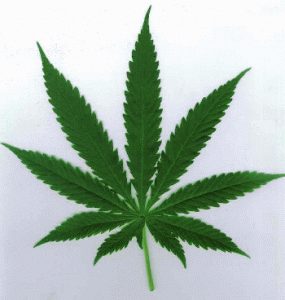Legislating an End to Synthetic Marijuana
Posted on by Townsend Myers
The recent rise of many forms of synthetic marijuana has reignited a debate over marijuana policy in the UnitedStates, offering compelling reasons for federal and state governments to at least consider legalizing, or substantially de-criminalizing marijuana in this country.
Discussions of the legalization of marijuana have raged for years in this country, with a variety of different focuses and subplots over time. Discussions about legalization in general focus on the relative harmless effects of marijuana as compared to alcohol and tobacco as well as the danger and expense inherent criminalizing its use and possession. There has also been tremendous focus in the last number of years on the debate over medical marijuana. Both issues, on their own, provide compelling reasons to take a hard look at the question of whether there are some steps toward legalization or substantial de-criminalization that our government should be taking.
Enter into the debate synthetic marijuana – spice, mojo K2, etc. Synthetic marijuana is a herbal and chemical product that mimics the effects of natural marijuana when smoked. It is produced by combining legal plant materials with chemicals (aka, synthetic cannabinoids) designed specifically to produce marijuana-like effects on the human brain. There are a variety of synthetic chemicals that have been developed to mimic the effects of cannabis. They all have lengthy chemical names, but also go by abbreviated names like JWH-018, CP 47,497 and HU-210. Both the plant materials and the synthetic cannabinoids had been legal and unregulated until recently.
Synthetic marijuana’s raison d’etre is the fact that marijuana is illegal. That is, it exists purely by virtue of marijuana’s illegality. It was developed by opportunistic entrepreneurs who saw a market for a product that satisfied their customer’s desire to smoke marijuana, but to do it “legally”.
Unfortunately, synthetic marijuana is apparently far more dangerous than it’s natural (but illegal) brother. The AP has reported that 3,200 people sought medical attention for the ill effects of synthetics in 2010, and in the first three months of 2011 that number was already up to 2,700. Compared to the limited health effects of marijuana, these numbers are staggering.
And the numbers have caught the attention of law enforcement. The Drug Enforcement Administration recently used emergency powers to outlaw five chemicals found in synthetic pot, placing them in the same category as heroin and cocaine. Numerous states have passed similar legislation banning the compounds used to make synthetic pot. But manufacturers are quick to adapt, often creating new, legal compounds that are only a single molecule apart from the illegal ones. Some states have now passed a second set of regulations banning those newly-created compounds. Presumably the manufacturers and chemists will create even more chemicals – and so on, and so on.
The efficacy of this effort to ban a seemingly endless variety of new synthetic compounds is questionable. It also ignores the genesis of the problem – that the illegality of marijuana created this market in the first place. So let’s recap:
- A relatively harmless drug (natural marijuana), due to being illegal, spawns a niche but explosive market for a legal but considerably more dangerous alternative (synthetic marijuana).
- Lawmakers seek to limit the harmful effects of the new alternative by making it illegal.
- Manufacturers develop “new” alternatives to circumvent the laws banning the original alternatives. These new alternatives appear to be as dangerous as the original compounds, and certainly more dangerous than natural marijuana.
- Lawmakers introduce new legislation in an effort to make the “new” alternatives illegal.
- Presumably the next step is that manufacturers will develop a “new” “new” alternative.
- And so on…
Rather than engaging in this ongoing and seemingly ineffective battle to legislate synthetic marijuana into extinction, the government needs to take a closer look at the real source of the problem. As long as marijuana is illegal, there will be a market for a “legal” alternative, and synthetic marijuana manufacturers seem bound and determined to stay one step ahead of the law. Legal (or substantially de-criminalized) marijuana, however, would mean the end of these dangerous alternatives.
If the government wants to protect the public from the dangerous synthetic chemicals, it’s time to think hard about marijuana policy. A legislative answer to the scourge of synthetic pot is available – but the answer doesn’t involve putting more and more things on the “illegal” list. It may be time to take one off.











